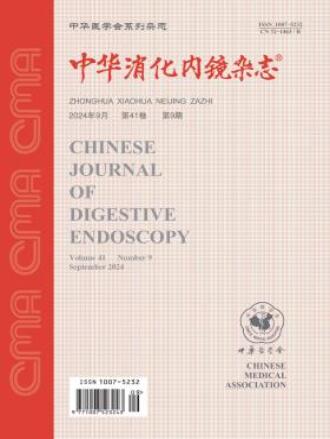Endoscopic submucosal dissection for colorectal lesions in elderly patients
引用次数: 0
Abstract
Objective To investigate the safety and effectiveness of endoscopic submucosal dissection(ESD) for elderly patients(≥60 years old) with colorectal lesions. Methods Data of 31 elderly patients(≥60 years old) and 23 non-elderly(<60 years old) patients who were found to have colorectal mucosal lesions by colonoscopy and underwent ESD treatment between January 2012 to January 2014 were retrospectively studied. Results There were no statistical differences between the two groups in gender, concomitant diseases, lesion location, lesion size and postoperative pathological diagnosis(P>0.05). Thirty-two lesions in elderly group and twenty-five lesions in non-elderly group were all curative resection. En bloc resection rates were 96.9%(31/32)and 96.0%(24/25)in the elderly group and non-elderly group respectively; the rates of bleeding during ESD procedure were 3.2%(1/31)and 4.3%(1/23); delayed bleeding rates were 12.9%(4/31)and 13.0%(3/23); the rates of perforation was 12.9%(4/31)and 0; postoperative infection rates were 3.2%(1/31) and 4.3%(1/23) respectively. There were no statistical differences between the two groups in any of these data(P>0.05). The mean time of follow-up were(14.8±1.7)months in elderly group and(14.7±1.8)months in non-elderly group, and there was no significant difference between two groups. No residual lesion or recurrent lesion was found in the follow-up period. Conclusion ESD is a safe and effective treatment for the elderly patients with colorectal lesion. Key words: Aged; Endoscopic submucosal dissection; Colorectum内镜下粘膜夹层在老年结直肠病变中的应用
目的探讨内镜下粘膜下剥离术(ESD)治疗老年(≥60岁)结直肠病变的安全性和有效性。方法老年患者31例(≥60岁),非老年患者23例(0.05)。老年组32个病灶,非老年组25个病灶均根治切除。老年组和非老年组的整体切除率分别为96.9%(31/32)和96.0%(24/25);ESD术中出血率分别为3.2%(1/31)和4.3%(1/23);延迟出血率分别为12.9%(4/31)和13.0%(3/23);穿孔率为12.9%(4/31),0;术后感染率分别为3.2%(1/31)和4.3%(1/23)。两组间各项数据比较,差异均无统计学意义(P < 0.05)。老年组平均随访时间为(14.8±1.7)个月,非老年组平均随访时间为(14.7±1.8)个月,两组间差异无统计学意义。随访期间未发现残留病变和复发病变。结论ESD是一种安全有效的治疗老年结直肠病变的方法。关键词:老年;内镜下粘膜下剥离;Colorectum
本文章由计算机程序翻译,如有差异,请以英文原文为准。
求助全文
约1分钟内获得全文
求助全文
来源期刊
CiteScore
0.10
自引率
0.00%
发文量
7555
期刊介绍:
Chinese Journal of Digestive Endoscopy is a high-level medical academic journal specializing in digestive endoscopy, which was renamed Chinese Journal of Digestive Endoscopy in August 1996 from Endoscopy.
Chinese Journal of Digestive Endoscopy mainly reports the leading scientific research results of esophagoscopy, gastroscopy, duodenoscopy, choledochoscopy, laparoscopy, colorectoscopy, small enteroscopy, sigmoidoscopy, etc. and the progress of their equipments and technologies at home and abroad, as well as the clinical diagnosis and treatment experience.
The main columns are: treatises, abstracts of treatises, clinical reports, technical exchanges, special case reports and endoscopic complications.
The target readers are digestive system diseases and digestive endoscopy workers who are engaged in medical treatment, teaching and scientific research.
Chinese Journal of Digestive Endoscopy has been indexed by ISTIC, PKU, CSAD, WPRIM.

 求助内容:
求助内容: 应助结果提醒方式:
应助结果提醒方式:


